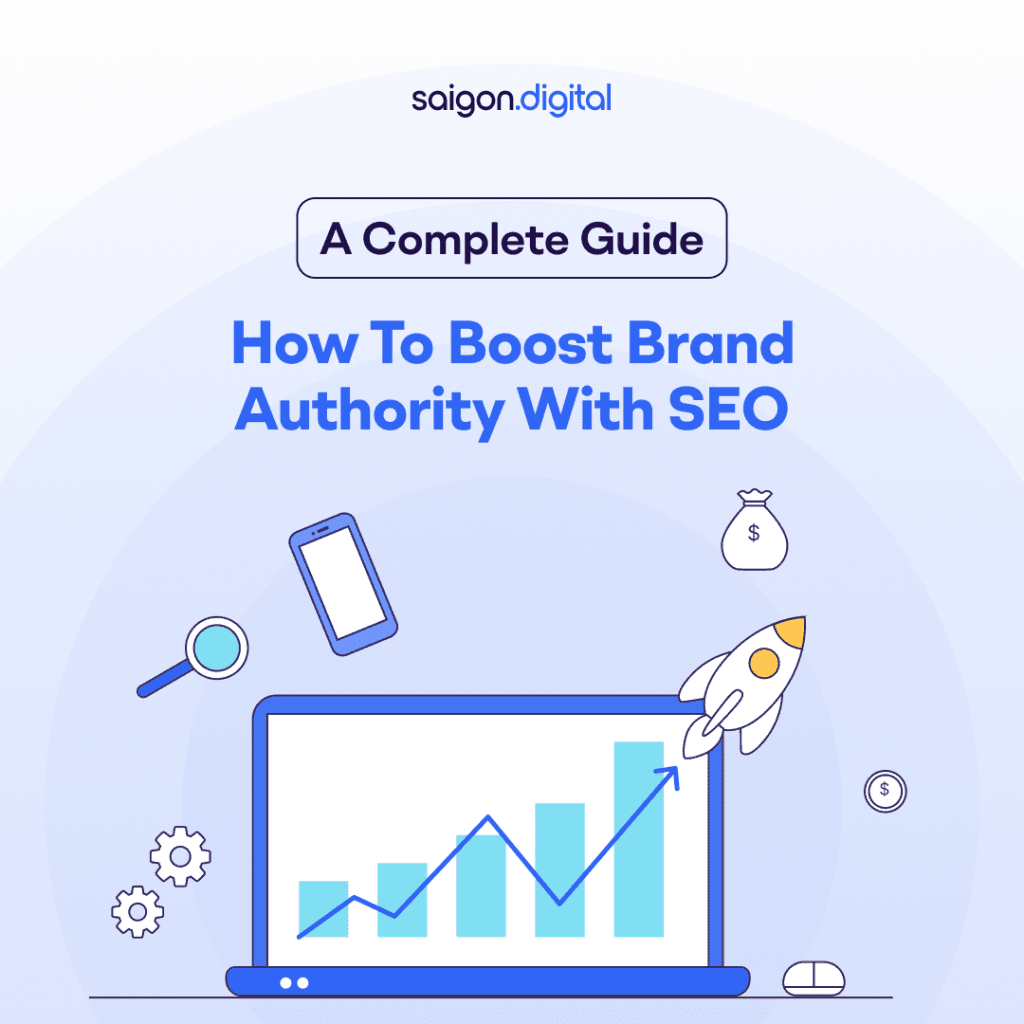
What is Brand Authority?
Brand authority is the level of credibility and recognition your brand commands within your industry or niche. It’s the sense that your business is not just another player in the market, but a go-to source in regards to the knowledge, value, and solutions relating to the particular field you operate in. Strong brand authority results in:- Higher rankings in search engines
- More mentions, backlinks, and organic traffic
- Greater user trust and increased conversions
- Invitations for partnerships, media coverage, and thought leadership roles
How to Build Brand Authority?
Building brand authority doesn’t happen overnight. At its core, it’s about becoming the trusted voice in your niche by offering real value, showing up where your audience spends time, and earning the respect of both people and search engines. Let’s explore the key steps that will help you establish and grow lasting brand authority.Create Authoritative Content
Authoritative content is the cornerstone of any strategy to increase brand authority. In the eyes of both users and search engines, content is what communicates your expertise. But not all content qualifies. To build true authority, create contents that:- Solve real problems: Focus on providing answers and actionable advice. The more helpful your content is, the more likely it is to earn trust.
- Go deep, not wide: Surface level blog posts rarely build authority. Long form, well structured pieces that explore a topic from multiple angles demonstrate deeper expertise.
- Use credible sources: If you decide to state a fact or methods, remember to back up those claims with data, research, and expert input. The more evidence based your content is, the more trustworthy it appears.
- Include unique insights: Don’t just repeat what others are saying. Bring your own experience, insights, case studies, or client examples into the content. This helps people know who you are and what you have achieved.

Build Topical Authority Through Content Clusters
Google no longer ranks pages based solely on keywords; it now assesses whether your site demonstrates topical depth. This is where topic clusters come into play. To create topic clusters:- Start with a pillar page: This should be a broad, all-encompassing guide on a key topic (e.g. “What is SEO?”).
- Write cluster content: These are more focused blog posts or pages that explore related subtopics (e.g. “Technical SEO Best Practices”, “On-Page SEO Checklist”).
- Connect them with internal links: Each supporting article should link to the pillar page and vice versa, signalling to Google the breadth of your expertise.
- Improve site navigation
- Keep users engaged longer
- Help Google understand your content hierarchy
- Reinforce your site’s authority on a particular topic
Leverage E-E-A-T Principles
Google’s E-E-A-T framework (Experience, Expertise, Authoritativeness, and Trustworthiness) plays a central role in how your site’s authority is evaluated. E-E-A-T isn’t a ranking factor in itself, but it’s built into the core updates and quality evaluations. Here’s how to implement E-E-A-T effectively:- Experience: Include first-hand insights, behind-the-scenes case studies, or real customer stories.
- Expertise: Ensure your authors have genuine knowledge—include bios, qualifications, and links to LinkedIn or professional pages.
- Authoritativeness: Get mentioned by others in your industry, earn citations, and build your domain reputation through backlinks.
- Trustworthiness: Your site should have clear contact information, privacy policies, security (HTTPS), and accurate information.
Earn Quality Backlinks (Naturally)
Backlinks remain a vital component of SEO and brand authority. They act as “votes” of confidence from other websites. However, not all backlinks are created equal. Focus on earning, not buying, links by:- Creating linkable assets: Develop tools, templates, original data studies, or comprehensive guides that others find useful and reference.
- Outreach with value: Build relationships with bloggers, journalists, or industry leaders through guest posting or content partnerships.
- Digital PR: Create newsworthy stories, reports, or unique insights that attract coverage in industry publications or mainstream media.
- HARO (Help a Reporter Out): Contribute expert quotes to journalists in exchange for a link and mention.
- Quality over quantity: One link from a reputable site like Forbes or TechCrunch is more valuable than dozens from low-quality directories.
Optimise On-Page SEO for Better Visibility
On-page SEO ensures that search engines and users can clearly understand what your page is about and what value it offers. It’s not just technical—it also affects how authoritative your brand appears in search results. Key on-page elements include:- Title tags: Craft concise, benefit-led titles that include your primary keyword and provoke curiosity.
- Meta descriptions: Write compelling summaries that encourage clicks and reflect your brand voice.
- Headers (H1-H3): Break content into readable sections with clear hierarchy and relevant keywords.
- Internal linking: Guide readers to related content to demonstrate depth and keep them on your site longer.
- Image optimisation: Use relevant images with descriptive alt text for SEO and accessibility.
Focus on Brand Consistency and Voice
Consistency builds trust. Every touchpoint, from blog posts and landing pages to newsletters and social media, should reflect your brand’s identity and tone. Inconsistent messaging makes you appear unreliable or amateur. How to achieve consistency:- Develop a brand style guide: Document your preferred tone, vocabulary, formatting rules, and visual elements.
- Train your team: Whether content is created in-house or outsourced, ensure everyone follows the same standards.
- Keep messaging aligned: Your core value propositions and brand story should remain consistent across all channels.
Improve Technical SEO and User Experience (UX)
A brand that’s difficult to navigate or slow to load loses credibility instantly. Poor UX signals to users (and Google) that your site may not be trustworthy or valuable. Technical SEO improvements to consider:- Fast-loading pages: Compress images, use caching, and avoid heavy scripts to improve performance.
- Mobile responsiveness: Ensure your content looks and works seamlessly on smartphones and tablets.
- Logical site structure: Use a clear hierarchy with categories and subcategories that help users (and bots) find content easily.
- Crawlability: Ensure your sitemap is up to date and that important pages aren’t being blocked in your robots.txt file.
Encourage and Showcase Social Proof
Social proof boosts perceived authority because it shows others trust your brand. Whether it’s clients, customers, or collaborators, showcasing their positive experiences builds your credibility. Ways to incorporate social proof:- Customer testimonials: Add quotes to product pages, landing pages, and even blog content.
- Online reviews: Encourage happy customers to leave Google or Trustpilot reviews and respond to them professionally.
- Case studies: Highlight real results from clients, with data, quotes, and visual storytelling.
- User-generated content (UGC): Share photos, videos, or stories from your audience on social media or your website.
Use Structured Data (Schema Markup)
Schema markups help search engines understand your content better and can unlock rich snippets, special search features that display more information about your page. Benefits of schema markup:- Improves CTR: Enhanced listings attract more clicks.
- Builds trust: Rich results like review stars or FAQs signal that your content is detailed and authoritative.
- Helps voice search: Schema improves how your content is used in voice queries and featured snippets.
- Article: Identify content type and structure.
- Organisation: Share business details like name, logo, social links.
- Review/Rating: Highlight user feedback and ratings.
- FAQ: Display collapsible answers directly in search results.
Monitor, Measure, and Refine Your Strategy
What gets measured gets managed. SEO and authority building take time, and consistent tracking ensures your strategy stays on course. Important KPIs to track:- Organic traffic: Are more people finding you through search?
- Keyword rankings: Are you ranking for terms related to your niche and expertise?
- Backlink growth: Are you attracting quality links from reputable sites?
- Dwell time and bounce rates: Are people engaging with your content or leaving quickly?
- Branded searches: Are more people searching your brand by name?
- Google Search Console: Monitor search queries and index issues.
- Google Analytics: Analyse user behaviour and conversion paths.
- Ahrefs / SEMrush / Moz: Track domain authority, backlinks, and competitor performance.
- Brand monitoring tools: Tools like BrandMentions or Mention help track where your brand is being referenced online.
How to Measure Brand Authority
Brand authority isn’t a single number you can track like pageviews or bounce rate. It’s a multidimensional concept made up of qualitative signals and quantitative metrics that, together, paint a picture of how trusted and influential your brand is. Here are the most effective ways to measure brand authority:Branded Search Volume
This is one of the clearest indicators of authority. If more people are searching for your brand name directly on Google (e.g. “Saigon Digital” instead of “seo agency in ho chi minh city”), it suggests rising brand recognition and trust.Domain Authority (DA) and Domain Rating (DR)
While not used by Google, tools like Moz (DA) and Ahrefs (DR) assign authority scores based on your backlink profile. These metrics give you a relative sense of how authoritative your website is compared to others in your space.- DA/DR of 20–30 is common for new or local brands.
- DA/DR of 50+ generally signifies strong digital authority in your niche.
Quality Backlinks
A high number of backlinks means nothing if they come from spammy or irrelevant sites. Instead, look for:- Links from reputable, niche-relevant websites
- Contextual mentions (within editorial content)
- Backlinks from news outlets or educational institutions
Mentions and Citations (With or Without Links)
If there are mentions of your brand in articles, blogs, interviews, or forums, even without a hyperlink, are powerful signals of influence.- Set up alerts using Google Alerts, Mention, or BrandMentions
- Track volume and quality of mentions: Are they positive? Are they from thought leaders or industry sites?





